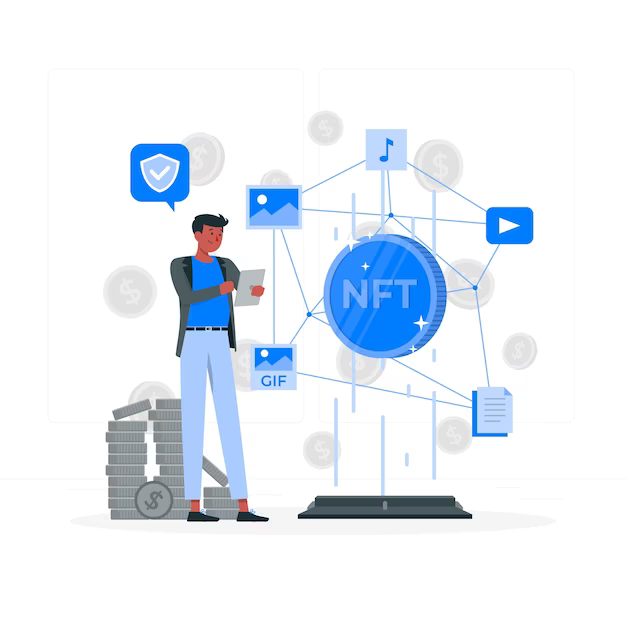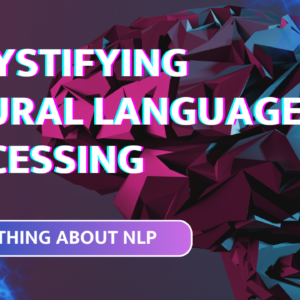Table of Contents
- Introduction
- What is DeFi?
- The Building Blocks of DeFi
- Essential DeFi Protocols
- Exploring DeFi Use Cases
- Understanding the Risks
- The Future of DeFi
- Getting Started with DeFi
- Frequently Asked Questions (FAQs)
- Conclusion
Introduction
The current financial system has various limitations that hinder its ability to provide an inclusive and efficient environment for all participants. However, an emerging concept called decentralized finance (DeFi) offers a promising alternative. DeFi refers to a financial system built on decentralized technologies like blockchain, which aims to democratize financial services and eliminate intermediaries. Understanding DeFi is crucial for individuals seeking greater control over their finances and for the future development of the financial ecosystem.
What is DeFi?

DeFi can be defined as a decentralized financial system that operates on the principles of transparency, accessibility, and censorship resistance. Unlike centralized finance, which relies on intermediaries such as banks and regulators, DeFi leverages smart contracts and blockchain technology to enable peer-to-peer transactions and autonomous financial applications. This shift towards decentralization brings several benefits, including increased financial inclusivity, reduced costs, enhanced security, and improved efficiency.
The Building Blocks of DeFi
Smart contracts: The underlying technology of DeFi
At the core of DeFi lies the concept of smart contracts, self-executing agreements that are coded into blockchain platforms like Ethereum. These contracts enable the automation of financial transactions, removing the need for intermediaries and ensuring trust and transparency in the execution of agreements.
Decentralized applications (DApps): Exploring their role in DeFi
Decentralized applications, or DApps, are essential components of the DeFi ecosystem. These applications leverage smart contracts to provide various financial services such as lending, borrowing, trading, and asset management. By eliminating the need for intermediaries, DApps enhance accessibility, reduce costs, and empower individuals to take control of their financial activities.
Blockchain interoperability: Connecting different decentralized platforms
One of the key challenges in the DeFi space is the lack of interoperability among different blockchain networks. However, emerging solutions aim to address this issue by creating bridges that enable seamless communication and interoperability between decentralized platforms. This development is crucial for the growth and interconnectedness of the DeFi ecosystem.
Essential DeFi Protocols
Decentralized exchanges (DEXs): Revolutionizing traditional trading
Decentralized exchanges, or DEXs, offer a decentralized alternative to traditional centralized exchanges. These platforms allow users to trade various assets directly with each other, eliminating the need for intermediaries. DEXs provide increased security, privacy, and control over assets while promoting global accessibility and liquidity.
Stablecoins: Providing stability in a volatile market
Stablecoins are cryptocurrencies designed to maintain a stable value by pegging them to traditional assets like fiat currencies or commodities. These digital assets play a crucial role in the DeFi ecosystem by providing a stable unit of account, medium of exchange, and store of value. Stablecoins enable efficient and low-cost transactions while reducing the exposure to market volatility.
Lending and borrowing platforms: Redefining the loan process
DeFi lending and borrowing platforms enable individuals to lend or borrow cryptocurrencies without the need for traditional intermediaries like banks. These platforms utilize smart contracts to automate loan agreements, collateralization, and interest rate mechanisms, allowing users to access funds or earn interest on their holdings more efficiently and transparently.
The Liquidity pools: Facilitating decentralized liquidity provision
Liquidity pools are decentralized pools of funds that provide liquidity to various DeFi protocols, allowing users to trade and transact with minimal slippage. Liquidity providers contribute their assets to these pools and, in return, receive a share of the transaction fees generated. By incentivizing liquidity provision, DeFi protocols ensure the smooth functioning of decentralized markets.
Exploring DeFi Use Cases
Peer-to-peer lending and borrowing: Empowering individuals financially
DeFi empowers individuals to lend and borrow directly without intermediaries, enabling greater financial inclusivity and access to credit. Peer-to-peer lending and borrowing platforms allow individuals to bypass traditional banks and seek funding or earn interest rates on their assets, regardless of location or credit history.
Automated market making: The future of market liquidity
Automated market making (AMM) is a crucial innovation within the DeFi space that eliminates the need for order books in asset trading. Instead, algorithms and smart contracts provide liquidity by creating pools of assets and automatically adjusting prices based on supply and demand. This innovation enhances market efficiency and liquidity while reducing trading fees and barriers to entry.
Yield farming: Maximizing returns through DeFi strategies
Yield farming involves leveraging various DeFi protocols to maximize returns on invested assets. Users can employ strategies such as providing liquidity to decentralized exchanges or lending their assets on lending platforms to earn additional rewards, often in the form of native tokens. Yield farming presents an opportunity for investors to optimize their returns in the rapidly evolving DeFi landscape.
Decentralized derivatives: Innovating traditional risk management
Decentralized derivatives platforms enable users to gain exposure to financial derivatives such as options, futures, and swaps without relying on centralized intermediaries. These platforms offer increased transparency, reduced counterparty risk, and enhanced accessibility, allowing users to trade derivatives in a decentralized and permissionless manner.
Understanding the Risks
Smart contract vulnerabilities: The importance of security audits
While DeFi offers exciting opportunities, it is essential to acknowledge the risks associated with smart contracts. Vulnerabilities in code can lead to potential exploits, resulting in financial losses. To mitigate these risks, rigorous security audits and thorough testing of smart contracts are crucial prior to deployment.
Regulatory challenges: Navigating legal frameworks for DeFi
As DeFi continues to gain traction, regulatory frameworks and compliance requirements are becoming increasingly relevant. Navigating these legal landscapes can be complex due to the decentralized nature of DeFi. It is crucial for participants to stay informed about evolving regulations and ensure compliance to avoid potential legal and regulatory penalties.
Market volatility: Assessing risks in an ever-changing landscape
The crypto market, which forms the foundation of DeFi, is highly volatile and subject to rapid price fluctuations. This volatility can affect the value of decentralized assets and impact overall portfolio performance. Investors should carefully assess and manage their risk exposure, diversify their holdings, and consider employing risk management strategies to navigate the dynamic DeFi landscape.
The Future of DeFi
Scalability solutions: Overcoming limitations and improving user experience
Scalability remains a key challenge for decentralized systems, including DeFi. However, several projects are actively working on solutions, such as layer two scaling solutions and blockchain interoperability, to enhance scalability and improve the user experience. These developments aim to address issues related to transaction throughput, network congestion, and high fees.
Institutional adoption: DeFi’s potential impact on traditional finance
As DeFi continues to mature and demonstrate its potential, traditional financial institutions are taking notice. Institutional adoption of DeFi could lead to increased liquidity, enhanced market stability, and the integration of decentralized solutions into existing financial infrastructure. Collaboration between traditional finance and DeFi may pave the way for a more inclusive and efficient financial ecosystem.
Innovations on the horizon: Predicting the future of DeFi
The DeFi space is continuously evolving, with new projects and innovations being developed at a rapid pace. The future of DeFi may involve advancements in areas such as decentralized identity solutions, cross-chain interoperability, and decentralized insurance. A multitude of possibilities exists, and it is exciting to speculate on how DeFi will shape the future of finance.
Getting Started with DeFi
Setting up a digital wallet: Accessing the DeFi ecosystem
To participate in DeFi, users need to set up a digital wallet that supports the storage and management of decentralized assets. Wallet options range from browser extensions to hardware wallets, each offering varying levels of security and user experience. It is essential to choose a wallet that aligns with individual preferences and security requirements.
Identifying reliable DeFi projects: Conducting due diligence
As with any investment or financial endeavor, conducting due diligence is crucial in the DeFi space. Users should thoroughly research and evaluate DeFi projects, considering factors such as team credibility, project transparency, audited smart contracts, community feedback, and overall market reputation. Identifying reliable projects is key to mitigating risks and maximizing opportunities.
Managing risks: Implementing best practices for security
Practicing good security hygiene is paramount in the DeFi ecosystem. Users should exercise caution when interacting with unknown projects, avoid sharing sensitive information, enable appropriate security measures such as two-factor authentication, and regularly update wallet software. It is also wise to diversify investments and avoid allocating excessive funds to a single DeFi protocol.
Frequently Asked Questions (FAQs)
- What is DeFi, and how does it differ from traditional finance?
- Is DeFi safe? What are the risks involved?
- How can I navigate regulatory challenges in the DeFi space?
- What are the potential benefits and drawbacks of participating in DeFi?
- How can I start earning yields through DeFi strategies?
- Are there any user-friendly guides or tutorials available for beginners in DeFi?
Conclusion
In conclusion, DeFi represents a transformative force that has the potential to revolutionize the future of finance. By leveraging decentralized technologies, DeFi enables greater financial inclusivity, efficiency, and transparency. However, it is crucial for individuals to understand the underlying principles, risks, and opportunities within the DeFi ecosystem. By exploring and actively participating in DeFi, readers have the opportunity to shape and benefit from the future of finance. Let us embrace this exciting world of decentralized finance and unlock its immense potential together.
Follow us on our Instagram – @squarebox.in
Read more interesting articles and blog by clicking here.




